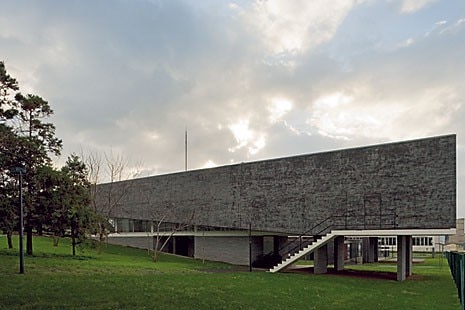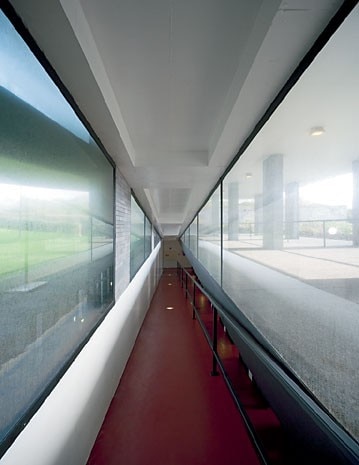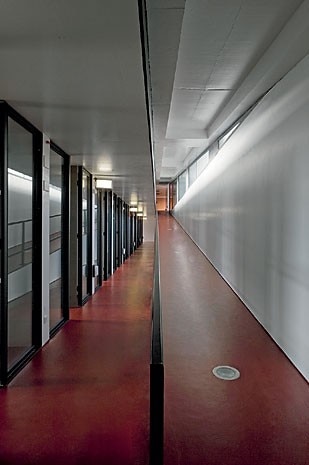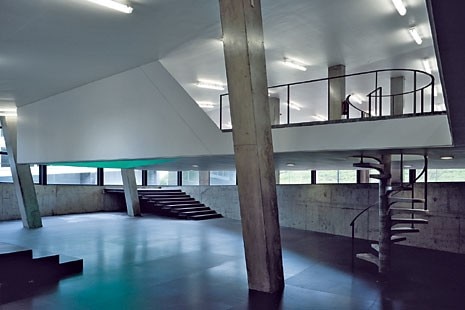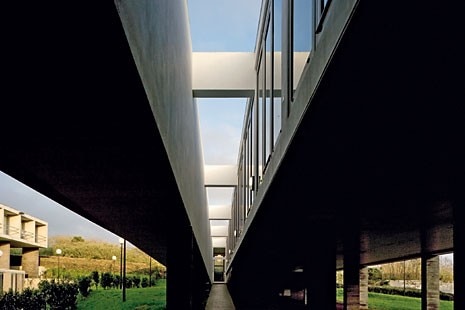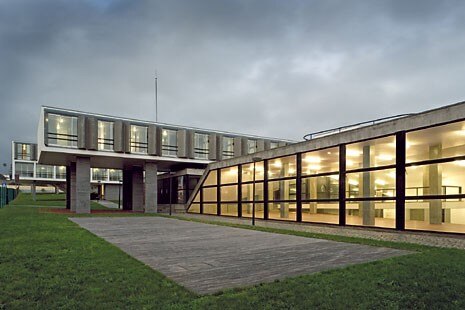The University Residence is an important part of this professional search. The competition was held in 1998 but it took almost nine years to develop fully on São Miguel Island in Azores. The place is an industrial area in the periphery of the capital Ponta Delgada, something between old industrial premises and low-quality suburban housing. As Manuel Gausa once wrote: “The contemporary city cannot continue to be assimilated as a single ideal place – to be finished or rebuilt – nor as a unique or possible formal model, but rather it should be considered as a decomposed and mongrel, dynamical and defi nitively unfinished multi-space made up of interactive, linked coexistences and evolutions.”
The project can be described as a “place of places” as a result of the negotiated approach between building and landscape. The requested programme (accommodation for 300 students and related facilities) is distributed around four buildings that hover above a sequence of park strips with different personalities. The Car Parking Strip and the Urban Stroll Strip are connectors; the Green Strip is the visual frontier; the Central Park Strip manages internal distribution; and the Events Strip is the place where things happen: orange grove, playing fi eld, garden and lovers’ labyrinth, cycle rack and in the end, the rural path also known as Canada and the Meadow Strip, a multipurpose green area. This poetic-pragmatic project method was something new in Portugal. It represented a fresh approach to architecture, where tradition was fused with contemporaneity. Without doubt, the architecture of a.s* continuously explores new avenues for professional practice, setting a turning point with this project for the younger generation of Portuguese architects.

